Five things Grand Theft Auto pioneered, and four you only think it did

The eternal pioneer?
Grand Theft Auto. Groundbreaking, game-changing series. Over the last ten or so years, it has probably done more to change the shape of gaming than any other franchise out there. But it hasn't done as much as you might think.
That's what happens when something becomes as big and as well-lauded as GTA. Its genuine achievements--many as they are--start to get swept up alongside things people just assume; the property's glowing persona perhaps blinding some to its real place in history. So with the new game landing tomorrow, and certain to push the series to new and even greater heights judging by our GTA 5 review, we thought it was time to sort through the plaudits and see what GTA really did and didn't invent.

Grand Theft Auto pioneered GOOD celebrity acting
Before Grand Theft Auto, celebrity appearances in games were usually a hideous lurching shambles of backfiring PR and nave zeitgeist-driven disaster. Between actors being told that interactive entertainment was the next big thing, and the desire of game publishers to add a bit of star power to an otherwise unremarkable release, we got some absolute cringers. Apocalypse, starring Bruce Willis. Revolution X, starring Aerosmith. Shaq Fu, starring Shaq. The Daedelus Encounter, starring Tia Carrere. Ripper, starring Christopher Walken, Burgess Meredith, Karen Allen, John-Rhys Davis and Paul Giamatti. None of them exactly great, as game or career moves.
But GTA, from part III onwards, has treated celebrity casting smartly. Theres no contrived stunt-casting. Simply, Rockstar just casts GTA like a decent director would cast a film. It considered the characters, the cinematic context of those characters, and it casts actors who can play those characters properly, whether they be megastar names or not. And ironically, that less glittery approach did ultimately turn games into the next big medium for established acting talent. By treating the casting process with puristic respect rather than as a means to mutual easy publicity, Rockstar started to make games a legitimate port of call for Hollywoods A-list.
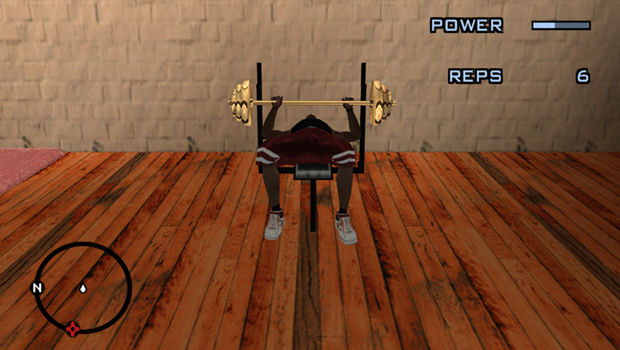
Grand Theft Auto pioneered RPG structure in action games
Before GTA, game genre boundaries were a lot more clearly defined. If you were a shooter, you were a shooter. If you were a driving game, you were primarily concerned with driving. If you were an RPG, you could have a semi-open world, but you usually had to open it up in a fairly linear fashion. And you were probably Japanese. But Grand Theft Auto III didnt care about those boundaries. As an action game, it blended gameplay types like none before it, but just as importantly it did so with a sense of scale, and a depth of content previously the preserve of the Final Fantasies and Elder Scrollses of the world.
Using its open-world not-New York to its full advantage, GTA III packed its world with secrets, Easter eggs, side-missions and a true sense of exploration and discovery. Thats standard practice in open-world (and even linear) action games now, but back then it was unheard of. San Andreas dynamically shifting character stats, customisable haircuts, and emphasis on physical health earn it the most overt GTA-RPG reputation of the series to date, but it certainly wasnt the first game to start playing with the genres ideas.
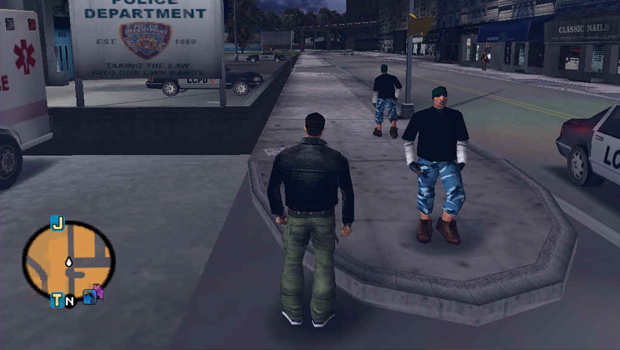
Grand Theft Auto pioneered the use of a game-world as a core gameplay mechanic
Before Grand Theft Auto III, game-worlds (in the action genre at least) were basically background scenery. They were an important visual compliment to the gameplay and story, but served the purpose largely of draping atmospheric set-decoration over the level geometry. But in GTA III, things went much deeper than that. Rather than be a narrative garnish to the gameplay, Liberty City was the gameplay. The very form and function of the game-world informed and defined the in-game action on a moment-to-moment basis, whether scripted as part of a pre-planned mission or during dynamically generated improvised play.
Grand Theft Auto has always been a game that thrives on being more than the sum of its parts. Not even the staunchest fan would claim that the gunplay has always been world-class, or that the driving model is the friendliest in the world. But the full, combined scope of what Grand Theft Auto offers, bound together in and by a world that facilitates and encourages exploration and involvement, has always made it a killer experience. Grand Theft Auto was the first action-game series you could live in, and arguably the first non-RPG world that felt like it went on in your machine after you switched the power off.
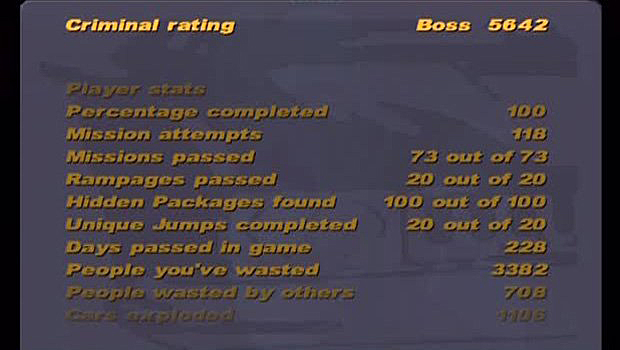
Grand Theft Auto pioneered stat-collection overload
Games have always had extra bits to find and do. From the first secret pipe room in Super Mario Bros., theyve hidden secret places and actions away like shiny pirate doubloons, buried just under the surface to drive men mad with the desire for discovery. Grand Theft Auto though, took extra bits to the next level. The next, ridiculous, utterly unnecessary, crazy-eyed, obsessive level.
Grand Theft Autos stats screen is a thing of mad wonder. An insane, glorious testament to needless completism, that is nevertheless utterly needed simply because it can exist and did not before. Part parodic deconstruction, part logical, played-straight, end-point of obsessive gaming practices, Grand Theft Autos ridiculous read-out of in-game info both mocks completism and facilitates a whole new level of it. Recording everything, from in-game days passed and total hospital visits, to kilos of explosives used and distance travelled on foot, GTA made multitudinous side-missions and tortuous hidden object quest suddenly seem like par for the course. Its a huge game that revels in and emphasises its hugeness every step of the way. Its gameplay focus is utterly driven by that mind-set, and that, in turn, has influenced the philosophy of most open-world games since GTA III first hit.
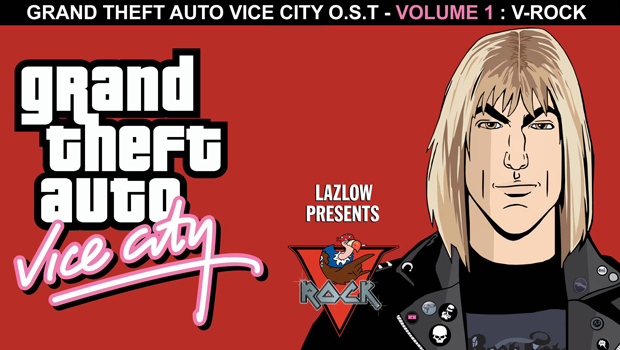
Grand Theft Auto pioneered smart use of licensed music
Licensed music had appeared in games before Grand Theft Auto. But Grand Theft Auto was the first series that really used licensed music. GTAs use of in-game radio stations has several ingenious purposes. It makes the game-world feel more authentic and real, by using real music and tying it to the world in a totally plausible context. No hint of fourth-wall troubling artifice here. It also cements the particular vibe each game was going for, with music selections reflecting and augmenting the sense of time and place inherent to each sequel.
And it also works as smartly-placed punctuation to the in-game action. With radio stations largely only available when in vehicles, the games have always ensured that music kicks in, naturally and seamlessly, when something significant is occurring. Whether the upbeat (or amusingly incongruous) soundtrack to a car chase, or the atmospheric soundscape of a long, ambient drive, GTAs use of music always compliments its action in ways more subtle and effective than more traditional soundtracks can, while providing the wealth of the dynamic, player-specific moments that the series the series thrives on.
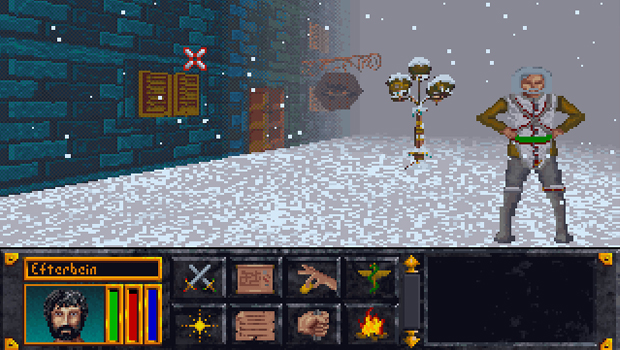
Grand Theft Auto did not pioneer open-world gaming
Grand Theft Auto popularised open-world gaming, and certainly kickstarted a raft of imitators. But invent it? Absolutely not. The exact start point will depend on your definition of the genre, but open-worlds had been around for many, many, years before even the first 2D Grand Theft Auto arrived.
The Elder Scrolls has been doing free-roaming worlds in the RPG space since Arena in 1994. You could also argue quite easily that The Legend of Zelda series has been open-world since the first game appeared in 1986. What GTA pioneered was the insertion of open-world gaming into vast, detailed, urban environments, built on real-world rules rather than fantasy abstraction. And it then gave the player a wealth of hitherto unimagined gameplay combinations within which to create a real sense of presence, afforded total freedom by his characters unique place on the wrong side of the morality scales. Except that it actually didnt actually do any of those things first either. Seriously. Read on and well explain.
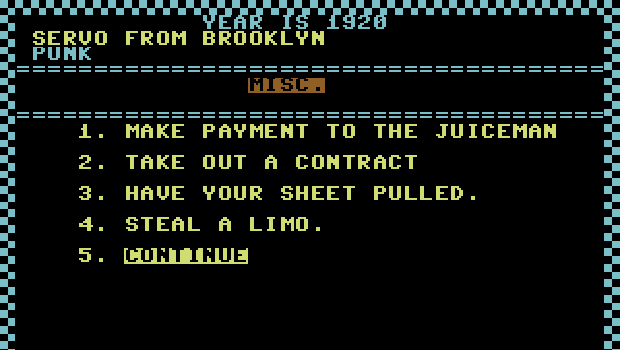
Grand Theft Auto did not pioneer the crime sim
Although it was the first game to pick up major notoriety for explicitly putting the player in the boots of the bad guy, the things that GTA simulates had been done in much older games, long before Gouranga! became a standard part of the gaming lexicon. One of the earliest--and most interesting--examples is 1982s Gangbusters for the Commodore 64. Ostensibly a text-based strategy RPG, it provided a slower-paced version of most of the activities GTA would eventually become synonymous with.
It cast the player as a low-level crim working his way up the food chain. It tasked him with buying illegal weapons and performing hits. It allowed car theft, and even provided the opportunity for empire building by way of purchasing businesses and running prostitution rings. It also shared Grand Theft Autos penchant for extra-curricular activities, providing horse races to bet on for recreation and to boost company funds. Oh, and it was a multiplayer environment, allowing several role-playing Dons to compete against each other for dominance. Thats something that Grand Theft Auto is only just getting around to in part five
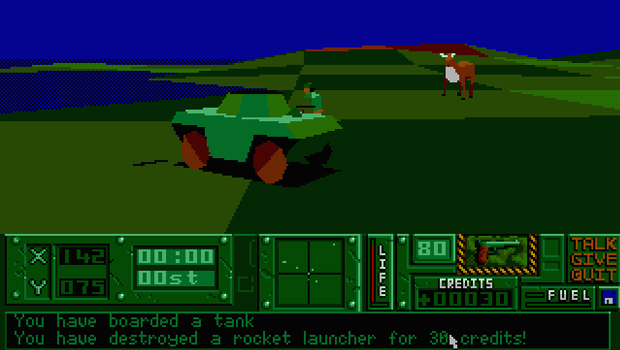
Grand Theft Auto did not pioneer the on-foot/in-vehicle hybrid
Grand Theft Auto has long been lauded as the first game to combine the previously separate conceits of driving and on-foot shooting. But it wasnt. For starters, there was Body Harvest. Released in 1998 on the N64 by DMA Design--the company that would one day become Rockstar--it championed the exact same kind of 3D open-world freedom, albeit within the context of an alien invasion. Still, the hallmarks of Grand Theft Auto were already there in its arguable prototype. The player was free to fight on foot or in any of the various civilian and weaponised vehicles lying around. There were buildings to enter, NPCs to talk to, and it was even possible to rack up a sizable body count comprising entirely innocent bystanders.
But Body Harvest itself wasnt even the first. Back in 1991, Activision released Hunter for the Commodore Amiga and Atari ST. A 3D, open-world, action-adventure, it allowed the player to explore a huge, free-roaming map comprising large land masses, oceans, enemies and wildlife. It also had a day/night cycle and furnished a plethora of vehicles and weapons upon the player. Okay, the entire thing was made out of about nine polygons, but next time someone tries to tell you that GTA and Far Cry invented this stuff, you can categorically explain exactly why theyre talking a big load of dump.
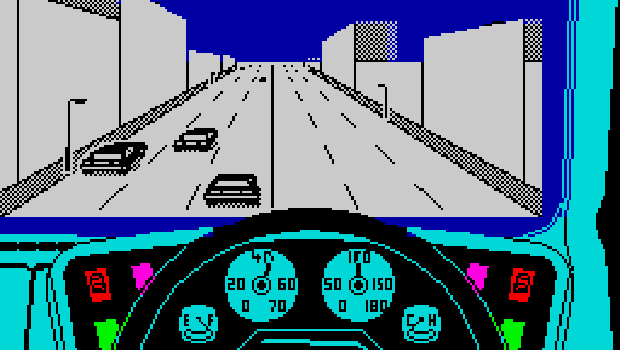
Grand Theft Auto did not pioneer open-world cities
Neither did Grand Theft Auto provide the first explorable, open-world city. That achievement (very probably) belongs to Turbo Esprit on the ZX Spectrum and Commodore 64. Although displayed in the resolutely 2D, fake-3D of the time, Durrell Softwares cops vs. dealers racing game played out in four fully mapped British cities, all of which could be--and had to be--freely navigated using intersections in order to hunt down the bad guys.
In straight screenshots, most of Turbo Esprit looks like standard-issue, into the screen racing fare. But back in 1988, those instances of slowing down the car, backing up to an overshot junction, and then taking a turn into a side-street were revelatory. Theyre still pretty startling now, given what we expect to see from driving games of the era.
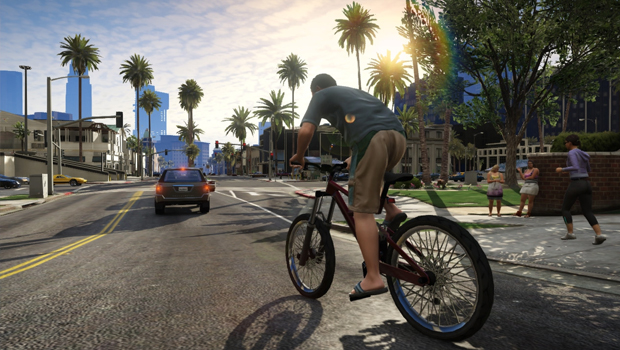
Where to next?
So, that's Grand Theft Auto's current placing on the video game pioneer scale. But what do you think of the present state of the series, and what would you like to see it add in future installments? Any other genres you'd like it to borrow from? Let us know.
And while you're here, make sure to check out some of our best GTA content. Make sure to read our Grand Theft Auto V review, if you haven't already, and check out our list of amazing GTA mods.



